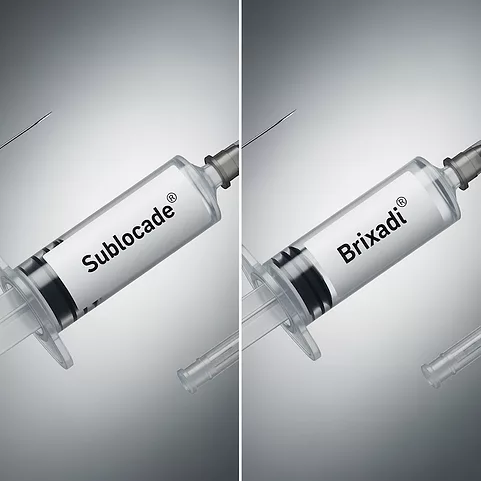Fentanyl Testing: An Emerging Harm Reduction Strategy
Alyssa Falleni, PharmD. CT Health Education and Research in SUD and Related Harms (CHERISH) Fellow; VA Connecticut Healthcare System, Orange, CT.
Noah Capurso, MD, MHS. Assistant Professor of Psychiatry, Yale University, New Haven, CT; Editor-in-Chief of The Carlat Addiction Treatment Report.
Dr. Falleni and Dr. Capurso have no financial relationships with companies related to this material.
The epidemic of opioid overdose deaths has continued to worsen, driven in large part by the recent rise in fentanyl availability. This potent synthetic opioid is being increasingly found in illicit drugs, often without a user’s knowledge. Drug testing with fentanyl test strips (FTS) informs people as to whether a drug they have purchased contains fentanyl, allowing them the choice to discard the drug or use it more safely. In this article, we review the technology behind FTS, how they can be obtained, how to properly use them, how to discuss them with patients, and their legality.
How FTS work
Originally developed to test for the presence of fentanyl in urine, FTS can also detect the presence of fentanyl in drugs obtained illicitly from the street (Krieger MS et al, Int J Drug Policy 2018;61:52–58). The strips use immunoassay technology, which is also found in urine drug screens and over-the-counter pregnancy tests. In an immunoassay, drug detection relies on binding between an antibody and the drug of interest or its metabolite (see CATR May/June 2022 to learn more about urine drug screens and immunoassay).
Benefits of immunoassay technology include its low cost, ease of use, and quick turnaround time. More specifically, FTS are reasonably accurate, with one study showing overall sensitivity and specificity of 98.5% and 89.2%, respectively, in the popular FTS brand BTNX Rapid Response (Park JN et al, Drug Alcohol Depend 2022;240:109610). The main limitation for FTS is that they can only detect fentanyl in the portion of drug that is being tested. Fentanyl can be unevenly distributed throughout a pill or a powder, and test results can therefore be inconsistent. The greater portion of drug that is tested, the more reliable results will be.
Who should use FTS
With fentanyl finding its way into more and more drug markets, anyone using drugs that do not come directly from a pharmacy should consider drug testing. Illicit opioids like heroin tend to contain fentanyl more often than not. Testing these drugs can be useful because a positive test can serve as a warning to not use the drug at all, to go “low and slow” (small doses administered slowly), or to only use the drug if others are around.
Some pills sold on the streets as prescription pills are in fact sophisticated counterfeits that contain fentanyl. These “pressed pills” can be indistinguishable from the real thing, so encourage patients to test them for fentanyl, even if they look like they came from a pharmacy.
In recent years, fentanyl has begun to show up in non-opioid drugs as well, including stimulants like cocaine and methamphetamines, hallucinogens like MDMA (ecstasy/molly), and even cannabis products. Anyone using these non-opioid drugs should especially be encouraged to test them for fentanyl, since these are people who usually do not have opioid tolerance.
Accessing FTS
FTS do not require a prescription. Most needle exchange programs and organizations that distribute naloxone will provide FTS free of charge. FTS can also be purchased through many online retail outlets. Costs vary, but FTS are typically around $2 per strip. To locate FTS suppliers in your area as well as online retailers, see the “Fentanyl Test Strip Resources” table.
How to use FTS
FTS are easy to use and do not require a high degree of health literacy. Instruct patients on the following three-step process:
- Select sample to test—there are three options to choose from:
- Dissolve all your drugs in water. This is the most accurate option. Drugs can still be used by drinking the solution, snorting it using a nasal sprayer, or waiting for the water to evaporate.
- Crush drugs on a clean surface. Add the powder to a small plastic bag. Shake the bag to mix up the powder and dump it out. The residue left inside the bag can be tested.
- Put 10 mg or more of drugs in a dry container like a bottle cap, small drinking glass, or clean cooker. Ten milligrams of powder is enough to cover the hair of Abraham Lincoln on a penny.
- Dissolve the drugs in water. For methamphetamine and MDMA, use one teaspoon for every 10 mg. For all other drugs, use half a teaspoon.
- Place the wavy end of the FTS into the water. Allow the FTS to absorb the solution for about 15 seconds. Pull the FTS out, place it on a flat surface, and wait for two to five minutes. (Think “wavy, water, wait.”)
A single pink line toward the portion of the FTS that is held indicates the presence of fentanyl. Two pink lines means that fentanyl was not detected, though patients should be instructed to always proceed with caution since no test is 100% accurate. The absence of lines, or a single pink line toward the wavy part of the FTS, indicates an invalid test, in which case the drugs should be retested with a new FTS (see “How to Read a Fentanyl Test Strip”).
Regulations
FTS laws can be complex and confusing. Some states outlaw any equipment used to test controlled substances, including FTS, defining them as drug paraphernalia. Other states have specific carve-outs that allow FTS. Still others have a definition of drug paraphernalia that does not include drug testing equipment, making FTS de facto legal to possess. Many states are in the process of passing carve-out legislation that would allow FTS under certain circumstances. The laws are constantly changing, so we recommend contacting your local public health departments to stay up to date.
CARLAT VERDICT
Testing drugs for fentanyl with FTS can be a lifesaving method of harm reduction. Inform all your patients using illicit drugs of its importance, ensure they have access to FTS, and instruct them on proper use. Be aware that FTS legislation is rapidly evolving, so familiarize your- self with local regulations.
 Table. How to Read a Fentanyl Test Strip
Table. How to Read a Fentanyl Test Strip
Click to view a PDF

Newsletters
Please see our Terms and Conditions, Privacy Policy, Subscription Agreement, Use of Cookies, and Hardware/Software Requirements to view our website.
© 2025 Carlat Publishing, LLC and Affiliates, All Rights Reserved.



_-The-Breakthrough-Antipsychotic-That-Could-Change-Everything.webp?t=1729528747)



